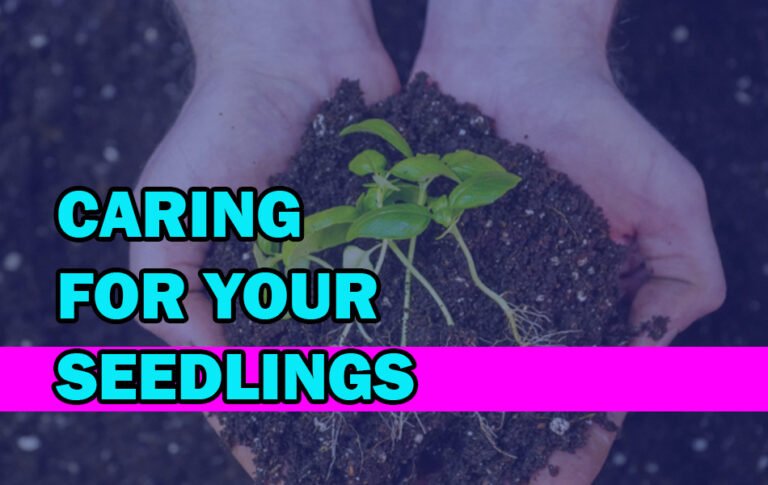You still need to give your seedlings proper care before and after they’ve sprouted. The first need you should think of is watering. You want to make sure the soil doesn’t dry out, but you never want to make the soil soggy. This is when you will keep using your spray bottle to keep the soil moist. Once you see sprouting, you can scale back on watering. At this point, you will water when you see the soil dry out slightly. This can be tricky, but you should water once or twice in the winter and up to three times in the summer.
Once your seedlings do sprout, you want to switch to the watering from the below method. Depending on the soil condition, fill the bottom tray where your seedling trays or pots are sitting to about an inch deep. If it’s already damp, cut the amount of water down. Consider the size of your containers as well. Your mini pots will need a bit more water to be effective. After you add your water, check on your trays in half an hour. If all the water is already gone, then you want to add a bit more. Is there too much water left? You don’t want to make the soil soggy, so you need to get that water out.
After your watering needs are handled, you want to make sure your seedlings are getting their other needs met as well. If you aren’t getting enough lighting, you will need grow lights to make sure they germinate properly. You just don’t want them too close to your plants, as it can burn them. Vegetable seedlings need a lot of light (at least 12 hours, but 16 to 18 hours are better), and that can be difficult when starting your seeds in January or February.
You also need to make sure you are still getting airflow for your seedlings. This will be beneficial for any plants that might need to be transplanted outside, as the airflow will mimic the wind and the plant will become stronger against the elements.
Fertilizing
Do not fertilize your seedlings until their true leaves appear. But what are true leaves?
When your seed germinates, it will have a set of leaves that looks like every other plant when it sprouts. After this stage, there will be another set that will come. Those will resemble the leaves they will have when they are mature, and this is when you can give them a small amount of fertilizer. At this stage, it is best to just use something like seaweed extract.
Thinning Your Seedlings
While you might have had successful germination with all of your seeds, you need to choose the ones that look the strongest to keep around. It will be hard, so keep this in mind. If you don’t thin out your seedlings, they are going to compete for food, water, air, and root space. This will be harmful to your strong seedling, which is why you should thin the herd. It is best to discard them, but if you really want to keep some of those seedlings, you can transplant them to an outdoor garden or containers that will be outside of the greenhouse. You can even use these seedlings as microgreens.
Potting Up
Once your seeds have been germinating for a few weeks, you want to look at the bottom of their containers. Do you see roots coming out of the drainage holes? Is the plant big? Does it look healthy? Is it still getting bigger or has it slowed down?
You may have to move them to a bigger pot. This process will happen once, and sometimes it will happen a second time before they are potted or planted in their permanent location.
Hardening
This is specifically for those plants you want to place in your outdoor garden. You don’t want to take them from the comfortable climate of the greenhouse and place them among the elements. You have to give those plants an adjustment period to avoid shocking the plants, which can kill them. Slowly introduce your plant to the outdoors during the warmest part of the day, then bring it in at night. As the weeks go on and the nights aren’t as cool, you can leave your plant outside longer until it is ready for its permanent home.

